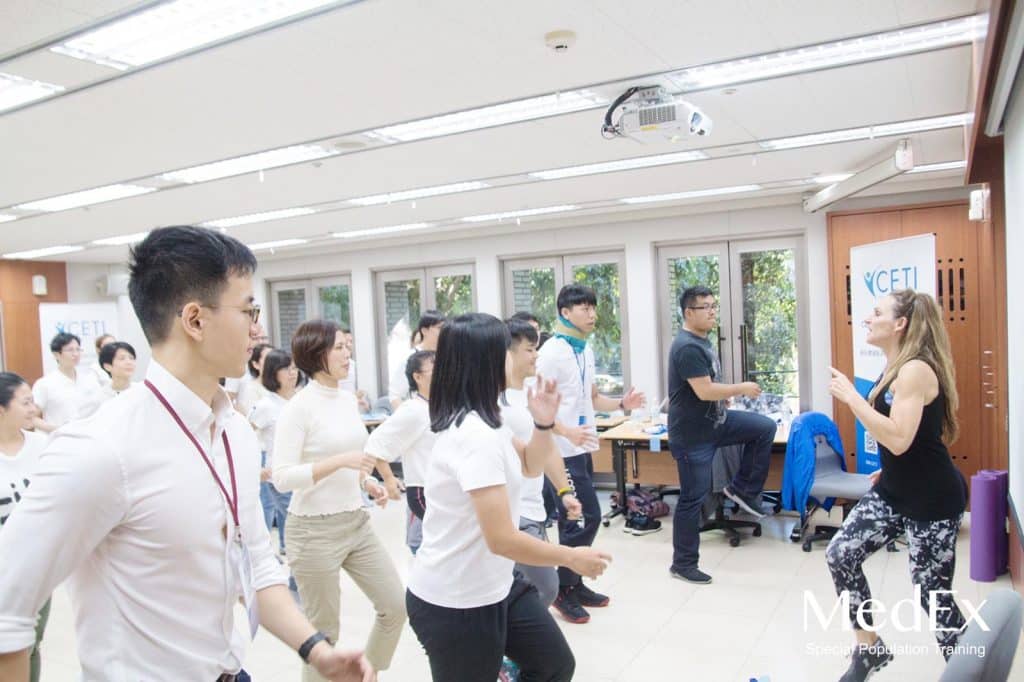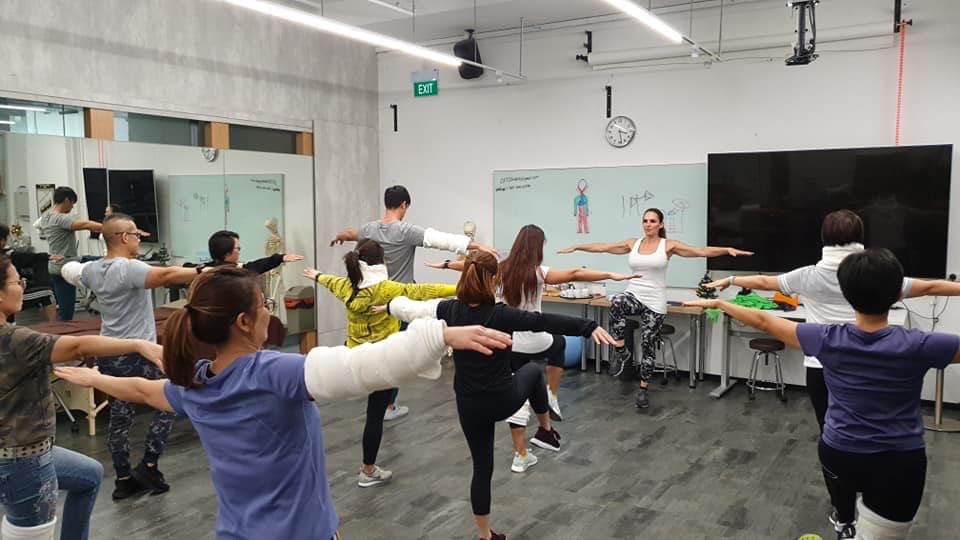
Teaching a group exercise class for cancer patients and survivors can be an overwhelming task for the average fitness professional.
Even if you have a group of participants that are all relatively the same age and have undergone the exact same treatment and surgical procedures, no two cancer patients will have the same response to the protocol.
How then does one even begin to wrap their head around creating a safe and effective group exercise class with so many variables?
Start with a few parameters:
- The class should be for a scheduled period (6-8 weeks, 8-12 weeks…)
- The same participants should begin and end together. Allowing new participants to join once the session has begun makes it more difficult for the instructor and can be distracting for the existing members of the class. The instructor would need to pay special attention to the new member and potentially neglect existing members.
- Keep the group small until you feel more comfortable in this setting. Start with 4-6 people.
- Try and find similarities amongst the participants such as age-range, gender, type of cancer/surgery/treatment, currently undergoing treatment or completed treatment, beginner/intermediate/advanced, etc.
You may start off with something like this:
Beginning Exercise Class for Prostate Cancer Patients & Survivors
If you are currently undergoing treatment for prostate cancer and are between the ages of 45-60, we encourage your participation!
Classes will begin on Feb. 3, 2020 and run every Monday and Wednesday from 4-5 p.m. through April 1st.
- Increase stamina/decrease fatigue
- Prevent/manage lower extremity lymphedema
- Reduce body fat & increase lean muscle mass
- Increase self-esteem and self-confidence
- Prevent/minimize the risk for osteoporosis, diabetes, future cancers, damage to heart and lungs
- Increased ability to perform day-to-day activities
- Regain control of your body and return to your previous level of activity or BETTER!
You must schedule an individual assessment, complete health history, and provide doctor’s medical clearance prior to beginning class.
The cost is XYZ and payment plans are accepted. If you need financial assistance please email Jane Doe to apply.
I suggest that you create a cheat-sheet similar to this:
Pink – limited shoulder flexion
Red – limited shoulder extension
Orange – limited shoulder abduction
Yellow – limited shoulder internal rotation
Green – limited shoulder external rotation
Blue – upper-crossed syndrome
Purple – lower-crossed syndrome
Black – upper extremity lymphedema
White – lower extremity lymphedema
These are just examples. You can modify them based on the group you are working with. Go to https://www.wristbandexpress.com/silicone-wristbands/1-2-solid-color-silicone-wristbands/ (or any other site you chose) and order a variety of wrist bands in different colors. Pay attention to the pricing based on how many you order.
You are probably wondering what you are supposed to do with this rainbow of wristbands… you hand them out according to the “issues” that the individual group members have. If you are instructing the class to perform “push-ups,” you might instruct the people in the class with blue wristbands to perform a chest fly or a row instead (they are typically shortened through the pectoral muscles and a push-up will exacerbate that). If you have members who are wearing white bands, make sure that when you have the class perform lower body exercises that they start and progress slowly with both weight and repetitions and monitor for swelling in their lower body over the next 24-28 hours. If you have someone with a green wrist band, you can instruct them to work on range of motion in anything requiring external rotation (refrain from using resistance until they achieve 90% of the lowest norm). Hopefully this makes sense! It’s a great way to help you monitor the class when you can not possibly remember everyone’s individual assessment!
Prior to the start date, gather your data from each participant and try and find similarities in the group.
Ask yourself what are the most important issues to begin with. Most people will need to work on body composition and do cardio to strengthen heart and lungs. Does anyone in the group have neuropathy? Will you need to focus on balance exercises? How will you progress/regress accordingly? Are they at risk for lymphedema? How will you progress safely and what modifications will you need to make (avoid wrapping anything around affected area or holding a position for an extended period of time). Do they have limited range of motion? That takes precedence over strength-training even though they will eventually add strength training. I would love to give you a perfectly formulated equation but unfortunately there is no such thing! This is where your individual skills as a fitness professional will be necessary.
I like to use a Reebok step (or other brand) as a workout bench/home-base. I will have participants select some light hand-weights, bands, weighted-balls, or whatever is available, and carefully place them near the bench.
Begin the exercise class with 10-15 minutes of cardio. If this is a beginner class and/or the participants are undergoing treatment and functioning at a lower level, consider cutting the class back to 1/2 an hour vs. the standard one hour and modify the timing accordingly. For a deconditioned or lower-functioning class consider progressing from marching in place with/without raising arms above head to a standing cardiovascular component. Keep in mind that some people will progress at different rates than others. It is critical to set realistic goals for each individual in the class to ensure their success. Always encourage everyone to work at their own level and praise them for even the smallest of improvements and accomplishments.
If you are teaching yoga or Pilates, you can modify the various exercises and poses accordingly. If participants have limited shoulder range of motion, a yoga pose should be fluid in motion rather than held for a period of time. this will encourage increased range of motion rather than isometric strength from holding a position. Remember that range of motion should be 90% or better of the lowest range of motion norms in a particular plane of motion prior to adding resistance of any kind (this includes holding a pose).
I typically alternate upper and lower body exercises and have participants do stretches or balance exercises in between. It’s also a great idea to include some neuro-training as well. This could be counting backwards, opening/closing eyes, switching planes/directions, etc.
At the end of class we cool down by incorporating the lymph drainage exercises for upper, or lower, or both (if it applies) and finish in supine position with some visualization, mediation, and gratitude.
Remember that the camaraderie of fellow class members can be an amazing support system within the group. Many people thrive in this environment while others will prefer one-on-one training. There is something for everyone and it is only through practice and safe experimentation that we can determine the best path for each individual.

